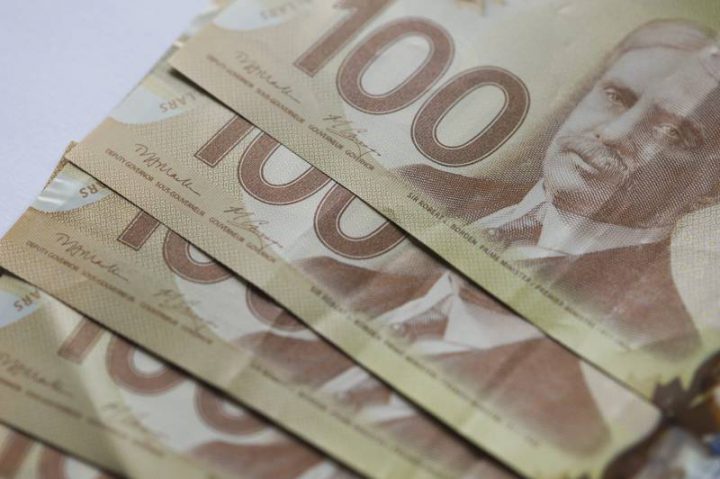Canadians aren’t using cash for small transactions like they used to – but demand for $100 bills has never been higher.

Though most of us rarely handle one, Bank of Canada statistics show that there are 11.5 $100 bills in circulation for every Canadian, up from six in 2003.
So where are they all? And what are they being used for?
“We assume that it’s a question of illegal transactions, or the underground economy, but we don’t have the data to prove those assumptions,” says Hendrix Vachon, a senior economist at Desjardins Group.
Decisions by the Bank of Canada about how many notes to print in what denominations are based on requests from the banks, which in turn reflect demand from bank customers.
Desjardins says the rise in demand for $100 bills is a mixture of the shadow economy — otherwise legal transactions like paying a tradesperson or employee in cash — illegal transactions and hoarding of cash.
“We can assume that in the construction industry is one place where there is more cash, compared to other industries.”
“A plausible explanation would be the combination of low interest rates (which reduces the opportunity cost of holding cash) and higher demand for precautionary holdings on the part of the public, given the recent oil shock and heightened uncertainty regarding returns from financial market investments,” Bank of Canada spokesperson Josianne Ménard wrote in an e-mail.
A 2012 attempt by Statistics Canada to measure the underground economy reached the conclusion that it was about 2.5 per cent of GDP. That proportion has been steady since the early 1990s, but has grown in real terms.
In the StatsCan study, construction was believed to be the biggest sector of Canada’s underground economy, which will not surprise anyone who has discussed a cash discount for home improvement with a contractor.
Other Western countries have seen similar trends. In the United States, the value of $100 bills in circulation has roughly quintupled since the mid-1990s.
In February, former U.S. Treasury Secretary Lawrence Summers came out in favour of phasing out the country’s $100 bill.
“I’d guess the idea of removing existing notes is a step too far. But a moratorium on printing new high denomination notes would make the world a better place,” he wrote in the Washington Post.
The Bank of England has seen growth in banknotes mostly in the £20 (C$37) and £50 (C$92) notes. A 2015 study estimated that as many as half of the British banknotes in circulation were either outside the country or used in the shadow economy.
(The amount of cash in the British economy spiked noticeably when the Value Added Tax, a sales tax similar to the GST, was raised to 20 per cent in 2010.)
Should governments stop printing higher-denomination notes? Several countries have debated it.
“(High-denomination) notes are the preferred payment mechanism of those pursuing illicit activities, given the anonymity and lack of transaction record they offer, and the relative ease with which they can be transported and moved,” wrote the authors of a paper published earlier this year by Harvard. “By eliminating high denomination, high value notes we would make life harder for those pursuing tax evasion, financial crime, terrorist finance and corruption.”
The Harvard paper’s main author, British banker Peter Sands, also came out for phasing out the British £50 note:
“Ask people in the United Kingdom when they last used a £50 note, the highest sterling denomination, and the most common answer is to pay a builder or plumber.”
The Bank of Canada stopped printing $1,000 bills in 2000 at the RCMP’s urging because they were only used for crime. But just under 800,000 of those bills are still out there, the Bank of Canada told Global News. They are thought to be circulating internally in the criminal economy.
Earlier in May, the European Central Bank announced that it will phase out the 500-euro note, worth C$734. Much like the old Canadian $1,000 bill, it has a reputation for connections with crime, although privacy-minded Germans, who prefer cash transactions, resisted the change.
Canada redesigned the $100 bill as recently as 2011, but Vachon thinks it may be time to get rid of it.
“It may be time to talk about removing it, if we can prove that normal people don’t use it as a way of payment.”
Different versions of different bank notes issued over the last couple of decades can make it difficult to tell what’s real and what may be fake. Mark McAllister reports.


Comments